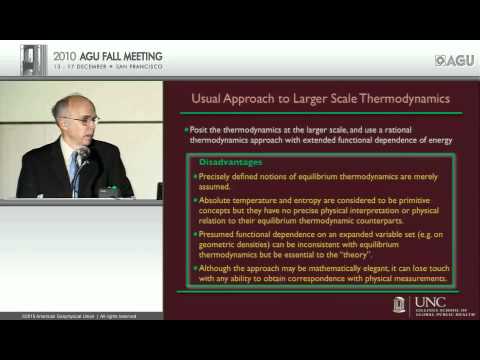Description:
Explore the trajectory of hydrologic model development in this AGU Fall Meeting Langbein Lecture. Delve into tidal models, finite elements, and quadratic grids before examining challenges in modeling porous media. Investigate the Representative Elementary Volume concept and advanced imaging techniques like photoluminescent volumetric imaging and X-ray tomography. Analyze Darcy's Law and its limitations, then explore a new thermodynamic approach to porous media modeling. Gain insights into single face thermodynamics, capillary pressure, and geometric density. Compare TCAT and Rational Thermodynamics approaches, and reflect on considerations for future model development. Conclude with a retrospective on hydrologic modeling progress and potential future directions.

Opportunities for Impacting Hydrologic Model Development - Langbein Lecture
Add to list